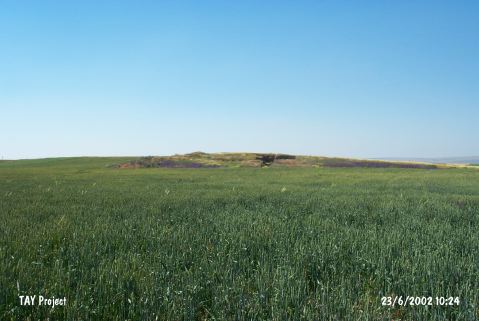|
©The Archaeological Settlements of Turkey - TAY Project
|
|
|
|
|
|
Küllüoba |
|
|
For site maps and drawings please click on the picture...  |
For photographs please click on the photo...  |
|
Type:
|
Mound |
|
Altitude:
|
915 m |
|
Region:
|
Central Anatolia |
|
Province:
|
Eskisehir |
|
District:
|
Seyitgazi |
|
Village:
|
Yenikent |
|
Investigation Method:
|
Excavation |
|
Period:
|
Late |
|
|
|
 |
|
| It lies some 1.6 km south of the Yenikent Village; 200 m southeast of the Seyitgazi-Yenikent road; 15 km northeast of the Seyitgazi District; about 35 km southeast of the Eskisehir Province. The mound is surrounded by fields. It is difficult to notice from a distance since it is a flat mound measuring 9.5-10 m in height and 250x150 m in dimensions. There are three vague small cones on the top hill [Efe 1998:152] which are designated as A; B and C by the excavator while they are referred to as west; east in the publication of the excavation results. The excavations were initiated in 1996 by T. Efe under the direction of the Eskisehir Archaeological Museum; and recently continued under T. Efe (1998). The investigations were mainly concerned with the western and eastern cones of the mound. During the 2001 season excavations; Late Chalcolithic debris was reached. Thin mudbrick walls and three silos dug into the virgin soil were recovered. It is suggested that the Late Chalcolithic pottery has a great importance for determining the relationships with the neighboring regions [Efe 2003:462]. It takes place in the registered archaeological sites list prepared by Ministry of Culture and Tourism. |
| Location: It lies some 1300 m south of the Yenikent Village; 200 m east of the Seyitgazi-Yenikent motorway; 15 km northeast of the Seyitgazi District; about 35 km southeast of the Eskisehir Province. The mound is surrounded by fields. |
| Geography and Environment: It is difficult to notice from a distance since it is a flat mound measuring 9.5-10 m in height and 250x150 m in dimensions. There are three vague small cones on the top hill [Efe 1998:152] which are designated as A; B and C by the excavation team leader while they are referred to as west; east in the publication of the excavation results. |
| History: |
| Research and Excavation: |
| Stratigraphy: |
| Small Finds: |
| Remains: |
| Interpretation and Dating: |